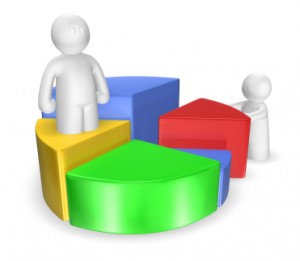
Mathematics Faculty Member, American Public University
Weather forecasts, political opinion polls, crop yields, business trends, and medical diagnoses all have one thing in common– statistics.
Statistics are used in almost every aspect of life, so colleges offer statistics classes as part of nearly all of their degree programs. The discipline of statistics is a form of applied mathematics. Researchers in the behavioral sciences use statistics to analyze their results while teachers use statistics to administer, score, and interpret test results.
So, why study statistics?
- Statistics is an essential part of professional training–you will likely use them at some point during your career
- Mathematics and statistics state how much, how many, how often, how extreme, or how common something is. Think about how many times you’ve had to decide any of those things!
- Statistics inform us about the relationship between two or more events in many areas of interest. For example, to what extent is IQ related to grades? Is there a correlation between watching violence on TV and carrying out a violent act?
Once conclusions are drawn from statistics, knowing the confidence of the results allows us to forecast events. For example: A management analyst reports that 60 percent of the student population plans to take an economics course. He estimates his margin of error to be five percent so he can predict that 55 to 65 percent of the students will take economics. Using precise numbers is ideal in this situation because stating “a majority of people plan to take economics,” is a prediction that may be slightly incorrect.
Ultimately, statistical tools enable researchers to decipher conditions that cause another event to happen. What people do is one thing–why they do it is much more complex. Frequently, the performance of one class in school will far exceed the performance of another class taught by the same teacher. Why? Is it the different room, each student’s abilities, or their motivations? Statistics help to answer these questions and many more in every facet of life.
About the Author:
Michael D. Miner is an Assistant Professor of Mathematics in the School of Science and Technology. He is a retired Army officer and holds a Bachelor of Science in Engineering and master’s degrees in Business Administration and in Applied Mathematics. He has over 16 years of instructing undergraduate students in college mathematics, statistics, and critical thinking.
Comments are closed.